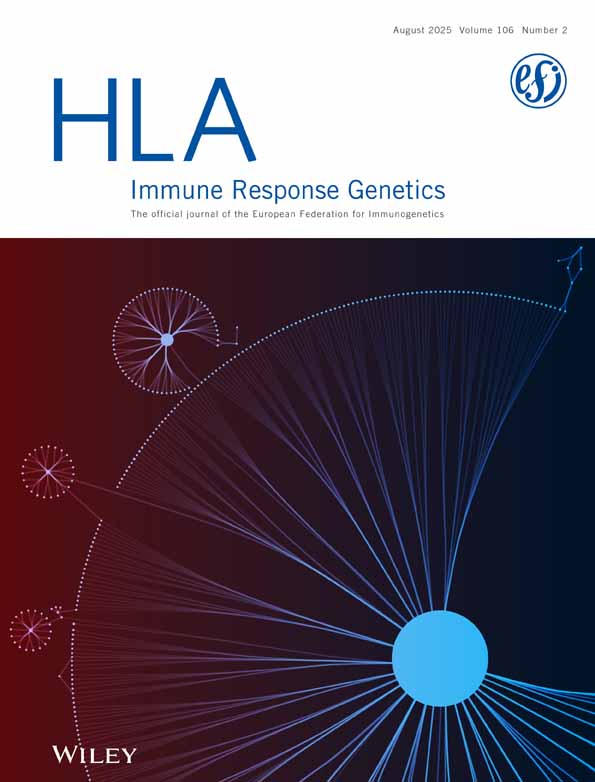Identification of the novel allele HLA-DRB1*1137 which probably originated from DRB1*11011: implications for mismatch with its ancestor allele at bone marrow transplantation
The name for the new sequence has been officially assigned by the WHO Nomenclature Committee. This follows the agreed policy that, subject to the conditions stated in the most recent nomenclature report ( 9), names will be assigned to new sequences as they are identified. Lists of such new names will be published in the following WHO nomenclature report. The nucleotide sequence data reported in this paper will appear in the EMBL, GenBank and DDBJ Nucleotide Sequence Database under the accession number AJ249726 (exon 2).
Abstract
Abstract: The identification of the new allele HLA-DRB1*1137, which was found in a Caucasian individual, is described. In the sequence analysis the new allele differs from DRB1*11011 by position 227 (T>A) which is located in exon 2. At the protein level, the new allele has one amino acid difference compared to DRB1*1101 (Phe47Tyr). Residue 47 is likely to contribute to the peptide binding site of HLA-DR11 and thus to be important for peptide binding. However, as phenylalanine and tyrosine have very similar physical and chemical features allogenicity in case of mismatch at bone marrow transplantation may be weak1.




